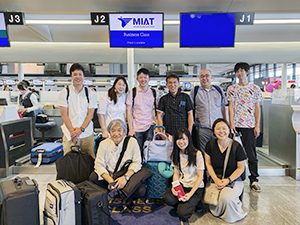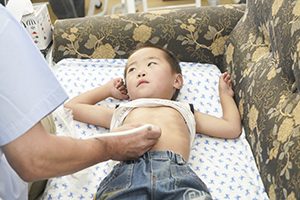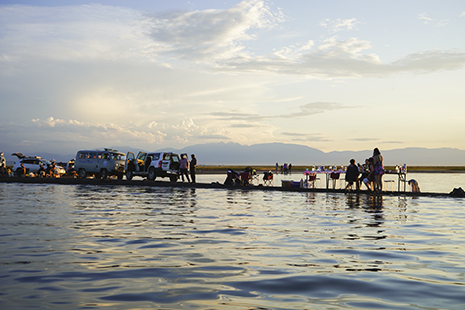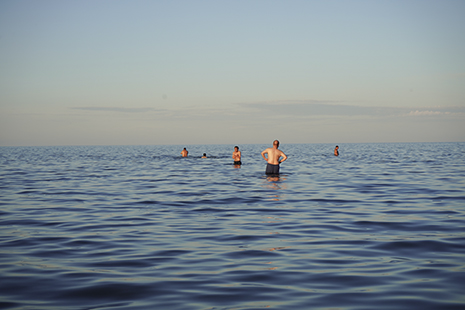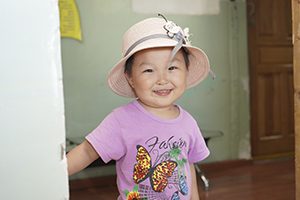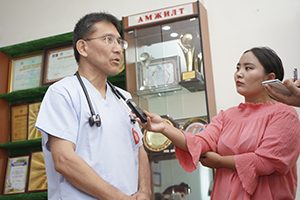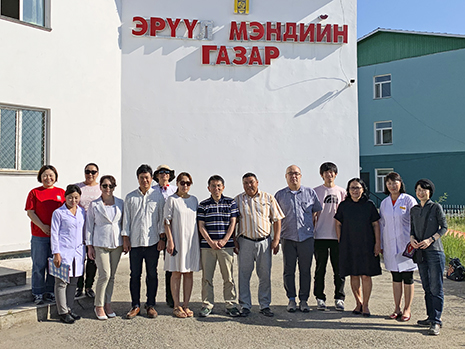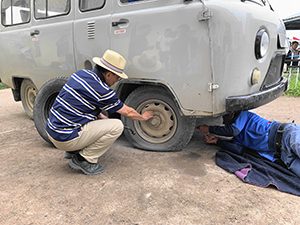Visit Mongolia from Edwards Lifesciences and Volunteer
2/5/2020
I am Sr. Manager of Edwards Lifesciences, an U.S. medical technology company. Edwards Lifesciences is the global leader in patient-focused medical innovations for structural heart disease, as well as critical care and surgical monitoring. Our corporate headquarters are located in Irvine, California, and we supply products and technologies to clinicians in nearly 100 countries around the world. With our passion for innovation with “Patient First,” the 13,000 employees worldwide make every effort on a daily basis. In 2004, the Edwards Lifesciences Foundation, the pillar of our giving, was established, and we committed our philanthropy to impact the global burden of heart valve disease by supporting the education, screening and treatment of 1.5 million underserved people by 2020 . And I have recently participated in the medical mission program by the Heart Saving Project (HSP), one of the Foundation grantees we have been supporting since 2013.
The heart screening program for the summer 2019 was divided into two destinations; one in Uvs Province and the other in Övörkhangai Province. In this report, I will mainly talk about my experiences in Uvs, as I accompanied the Uvs group.
My first visit to Mongolia
It was on August 7, 2019 at Narita Airport that I met with the members; Dr. Takashi Higaki and Dr. Takayuki Oku of Ehime University, Dr. Kazuya Terada of Shikoku Medical Center for Children and Adults, Dr. Toshi Yanai of Tokyo Metropolitan Children’s Medical Center, Mr. Daiki Tokumoto of Ehime University School of Medicine, Ms. Reika Kurashima of Shimane University Faculty of Medicine, and Ms. Toya of HSP. When we thought we were about to leave soon, all of a sudden, a delay was determined for our flight bound for Ulan Bator, obliging us to spend nearly four hours at Narita Airport. While waiting, we passed time by practicing origami with the doctors so that we will give origamis to Mongolian children. We usually do not like waiting so much; however, I think the waiting time probably proved to be a good opportunity to solidify the union of the team.
We arrived at Ulan Bator nearly at midnight. We went into its urban area full of exoticism with neon lights of unique colors, when I actually realized that I finally come to Mongolia. We also met, at the hotel, Dr. Masamichi Tamura of Akita Red Cross Hospital, Ms. Rie Kitakado, a nurse at the Kindai University Hospital, and Mr. Yu Yamanashi of Shimane University Faculty of Medicine, who came here departing from Kansai Airport.
On the next day, all our members visited the National Mongolian Medical Center for Children and Mothers. In the morning, heart screening was conducted there for the children who were scheduled to receive catheter treatment in the same hospital.
When we arrived at the hospital, we found a number of parents and children waiting in the hallway in a long line. There was one examination room, in which we were divided into three groups and positioned in respective places and arranged the echographs the team brought from Japan: The screening has started.
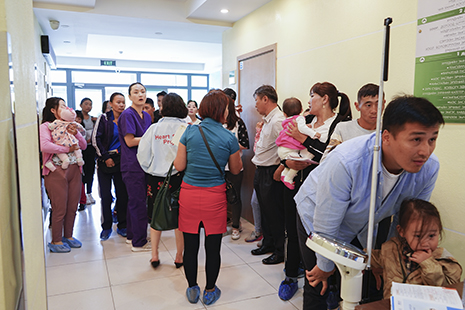
 Some children lay down on the sofas or camp beds and looked uneasy, some smiled with embarrassment at my camera, some were crying loudly — I thought children’s behavior at hospitals look alike in any country. Some of them felt relieved as no problems were found, while on the other hand there were some whose condition had already got so worse that they needed to undergo operation right away. As the system for treating serious pediatric heart diseases has not yet been firmly established in Mongolia, some children have no option other than going abroad, if the case cannot be treated with catheters. Given the standard of living in this country, it wrung my heart to think how severe the option was to them.
Some children lay down on the sofas or camp beds and looked uneasy, some smiled with embarrassment at my camera, some were crying loudly — I thought children’s behavior at hospitals look alike in any country. Some of them felt relieved as no problems were found, while on the other hand there were some whose condition had already got so worse that they needed to undergo operation right away. As the system for treating serious pediatric heart diseases has not yet been firmly established in Mongolia, some children have no option other than going abroad, if the case cannot be treated with catheters. Given the standard of living in this country, it wrung my heart to think how severe the option was to them.
Twenty-eight patients finally received examination at the National Mongolian Medical Center for Children and Mothers.
After that, the Uvs group started for the airport, while the Övörkhangai group started by car to the destination.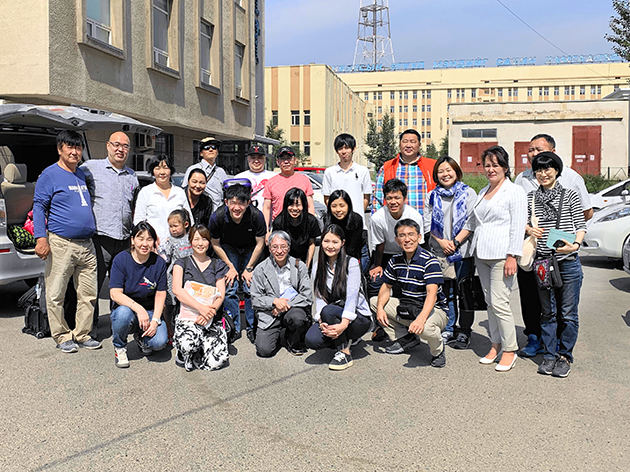
The road to Uvs
Dr. Undra of the National Mongolian Medical Center for Children and Mothers joined the Uvs group, which consisted of Dr. Higaki, Dr. Terada, Dr. Oku, and Mr. Tokumoto along with the staff members of Ms. Toya, Ms. Amra and Mr. and Mrs. Otsuka, the interpreters. When we arrived at the terminal, we found the flight of the day after tomorrow on which we would return from Uvs to Ulan Bator had been cancelled. This meant that we would have to charter a car and push our way through the trackless roads of more than 1,300 kilometers to return. This would have affected our schedule thereafter for catheter treatment, in spite that we knew some people were waiting for us in Uvs. After a while, however, the flight which we believed had been cancelled made a sudden comeback. Further, the comeback was as a result of the strong complaint made by the Mongolian staff of HSP. “This is fantastic. In Mongolia we can have a plane fly by making complaint!” It seemed, in fact, that we were able to overturn the situation, since the flight was cancelled for unjustifiable reasons of the airline company. We therefore left Ulan Bator smoothly as we had no more concern about the return flight.
Uvs nuur
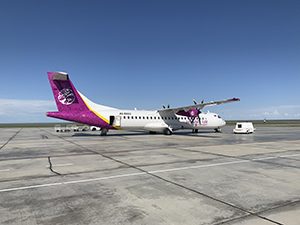 We arrived at the airport in Ulaangom, Uvs Province, which was located at the center of a great plain: Looking around, we found no buildings other than the airport. It was exactly the same as the Mongolia in our imagination, which was totally different from Ulan Bator. The Uvs Province is located in the Northwestern part of Mongolia, sharing a border with Russia in its Northern part. In its capital Ulaangom blessed with blue sky, a magnificent scenery of a chain of mountains spread beyond the great plain. The car came from the Ulaangom Airport to take us was a gray van of the type seldom found in Japan: I heard it was a Russian-made ambulance.
We arrived at the airport in Ulaangom, Uvs Province, which was located at the center of a great plain: Looking around, we found no buildings other than the airport. It was exactly the same as the Mongolia in our imagination, which was totally different from Ulan Bator. The Uvs Province is located in the Northwestern part of Mongolia, sharing a border with Russia in its Northern part. In its capital Ulaangom blessed with blue sky, a magnificent scenery of a chain of mountains spread beyond the great plain. The car came from the Ulaangom Airport to take us was a gray van of the type seldom found in Japan: I heard it was a Russian-made ambulance.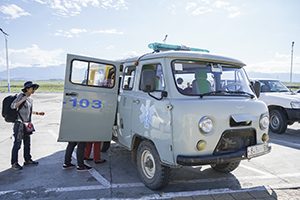
So we got into the ambulance somehow or other, and headed to the town through the wild, direct road. On the way to the town, through the car windows, we saw the herds of horses along with the “gher,” the Mongolian residence I had ever seen before only in photographs or videos.
The head of the local healthcare department was kind enough to invite us for dinner at the Uvs nuur, the largest lake in Mongolia placed on the World Heritage List. It was natural that we went to the lake by the ambulance. After pushing our way through the trackless roads for about one hour, the scenery of the extensive lake spread before us. The table was set skillfully by the lake, and we had dinner in a most wonderful place.
Children at the Uvs Provincial Hospital
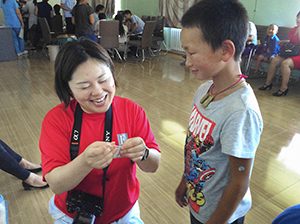 On the following day at the Uvs Provincial Hospital, the medical examination finally began. We found a number of parents and children waiting in the hallway, who made a line scrambling for the screening. It was implemented by installing two echographs in a room about as large as a classroom in Japan. I had brought stickers, origamis, balloons and other things from Japan so that the waiting children would not be bored while the doctors were doing the screening. At first, the children watched me folding the origami paper from a distance with great interest. When I handed them cranes, balloons, airplanes and others I made by folding the paper, they responded with shy smile. Besides, I handed a small assortment of candy brought from Japan to each one of them when he or she finished receiving the examination. It looked to me that the waiting children were looking forward to receiving the examination, looking at the children receiving the candy.
On the following day at the Uvs Provincial Hospital, the medical examination finally began. We found a number of parents and children waiting in the hallway, who made a line scrambling for the screening. It was implemented by installing two echographs in a room about as large as a classroom in Japan. I had brought stickers, origamis, balloons and other things from Japan so that the waiting children would not be bored while the doctors were doing the screening. At first, the children watched me folding the origami paper from a distance with great interest. When I handed them cranes, balloons, airplanes and others I made by folding the paper, they responded with shy smile. Besides, I handed a small assortment of candy brought from Japan to each one of them when he or she finished receiving the examination. It looked to me that the waiting children were looking forward to receiving the examination, looking at the children receiving the candy.
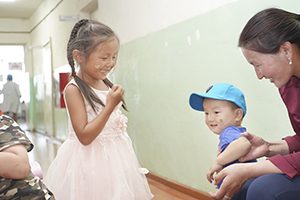 I found many of the children in Uvs, girls in particular, wearing fancy dresses and fashionable shoes. At first I did now know why they came to hospitals so dressed up, it might perhaps be a very special occasion for them to come to the town to visit the hospital. The Mongolians do not have the system of medical examination of infants like that in Japan and, therefore, not a few children there have their first opportunity to be examined by a doctor at the echograph examination conducted by the HSP. I hoped that the system would soon be improved to support children’s health in this country, among others — I thought so looking at their fancy dresses.
I found many of the children in Uvs, girls in particular, wearing fancy dresses and fashionable shoes. At first I did now know why they came to hospitals so dressed up, it might perhaps be a very special occasion for them to come to the town to visit the hospital. The Mongolians do not have the system of medical examination of infants like that in Japan and, therefore, not a few children there have their first opportunity to be examined by a doctor at the echograph examination conducted by the HSP. I hoped that the system would soon be improved to support children’s health in this country, among others — I thought so looking at their fancy dresses.
Education for doctors
During the visit, I was particularly impressed at the scene in which Japanese doctors were meticulously teaching Mongolian doctors about the echograph examination. I understand that, in many cases in Mongolia, the graduates of medical school are assigned to local hospitals only after a few years of experience as residents: They have to learn clinical medicine by themselves. In such an environment, they may often find it difficult to obtain necessary techniques or knowledge and, therefore, the local medical examinations in which they are given direct instructions from the experienced, Japanese doctors may be a precious opportunity to learn a lot for the Mongolian doctors.
Oh! We won’t be able to reach Ulan Bator?
We finished examination and conference during the morning of the following day. Now it was time to return to Ulan Bator. In Uvs, we examined a total of 155 people — 114 on the first day and 41 on the second. We thanked the people in the hospital and, when we were about to start, the ambulance, which had taken us to various places, got a flat tire! After all we were divided into groups to ride in smaller cars to arrive at the airport.
We then boarded the plane bound for Ulan Bator without any problems. The announcement made immediately before departure, however, informed us of a change of the stopovers. The plane was originally scheduled to fly only via Ölgiy, but was changed to reach Ulan Bator via two airports in Khovd and Mörön, instead of going to Ölgiy. After experiencing tragic and comic affairs at the stopover airports, we finally returned to Ulan Bator late at night. Thanks to the delay, our arrival overlapped with that of the doctors of the catheter group who were scheduled to start activities on the following day, whom I thought I would not be able to meet with according to the original schedule, and we were able to exchange greetings with them. I, subsequently, left the hotel at five o’clock on the next morning to return to Japan, regretfully saying good-bye to the team members who would start catheter treatment on the following day.
The warm-hearted country and a professional team
Before I traveled to Mongolia, I had only limited information on the country and, to be honest, I had substantial feeling of anxiety about it. Actually, however, all the people I met there were very kind, parents wished for their children’s good health and, above all, they were truly looking forward to the visit by the Japanese doctors. I was very much impressed at the fact that the Japanese doctors fully understood their feelings and were making efforts trying to help as many children as possible regardless of the limited devices or environment. In this project, I accompanied only the heart screening group, but I realized at first hand that the formation of a splendid, professional team led by enthusiastic, reliable and experienced doctors would very favorably affect young doctors and medical students and would lead to the activities in the future. I am pleased, and proud that we can support such activities with the Edwards Foundation. I wish to express my sincere gratitude to the members of the medical treatment team with which I have had the pleasure of accompanying, as well as the HSP staff members of both Mongolia and Japan.

